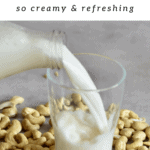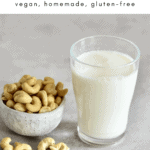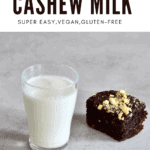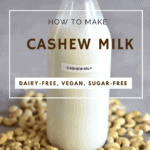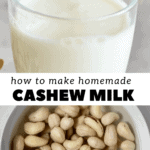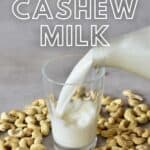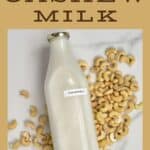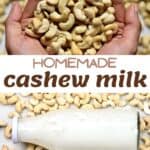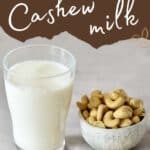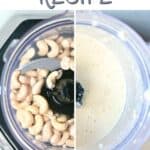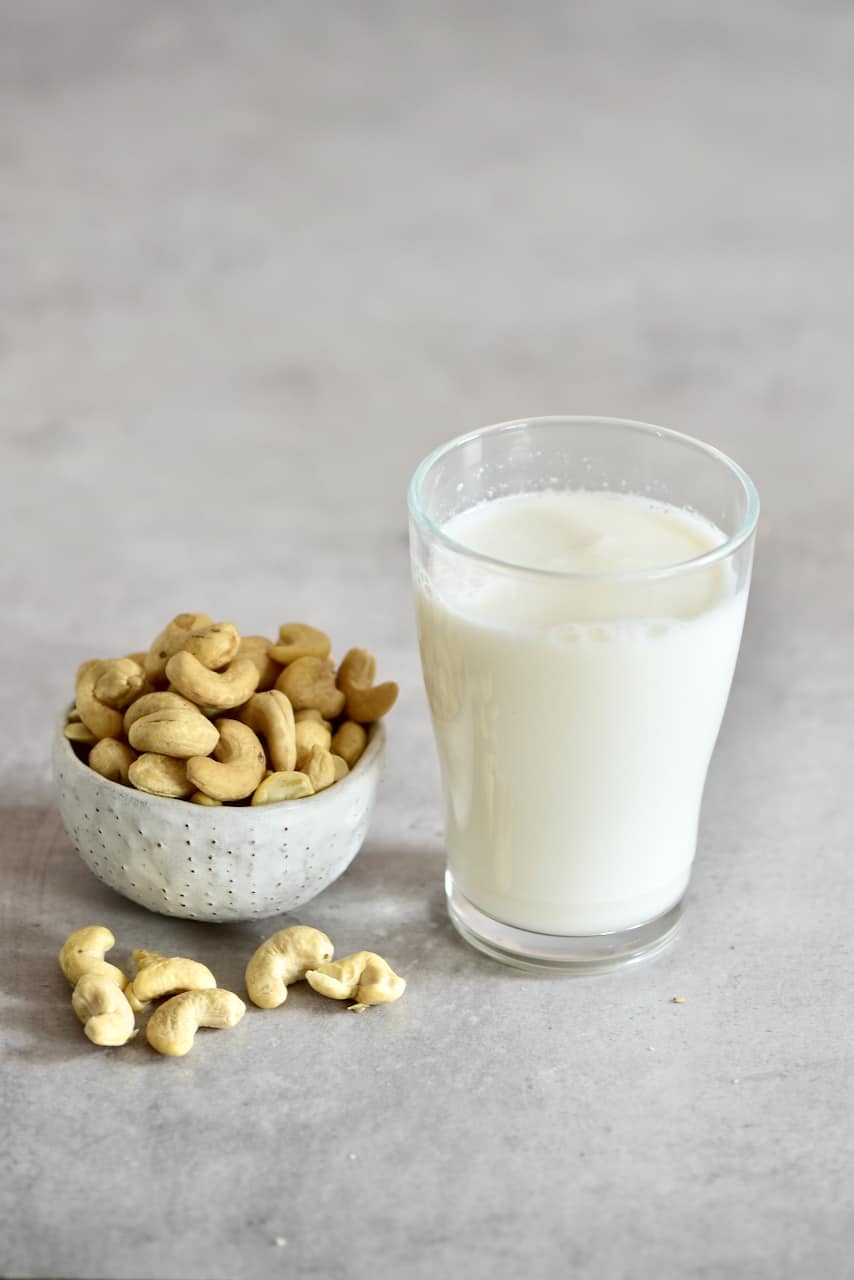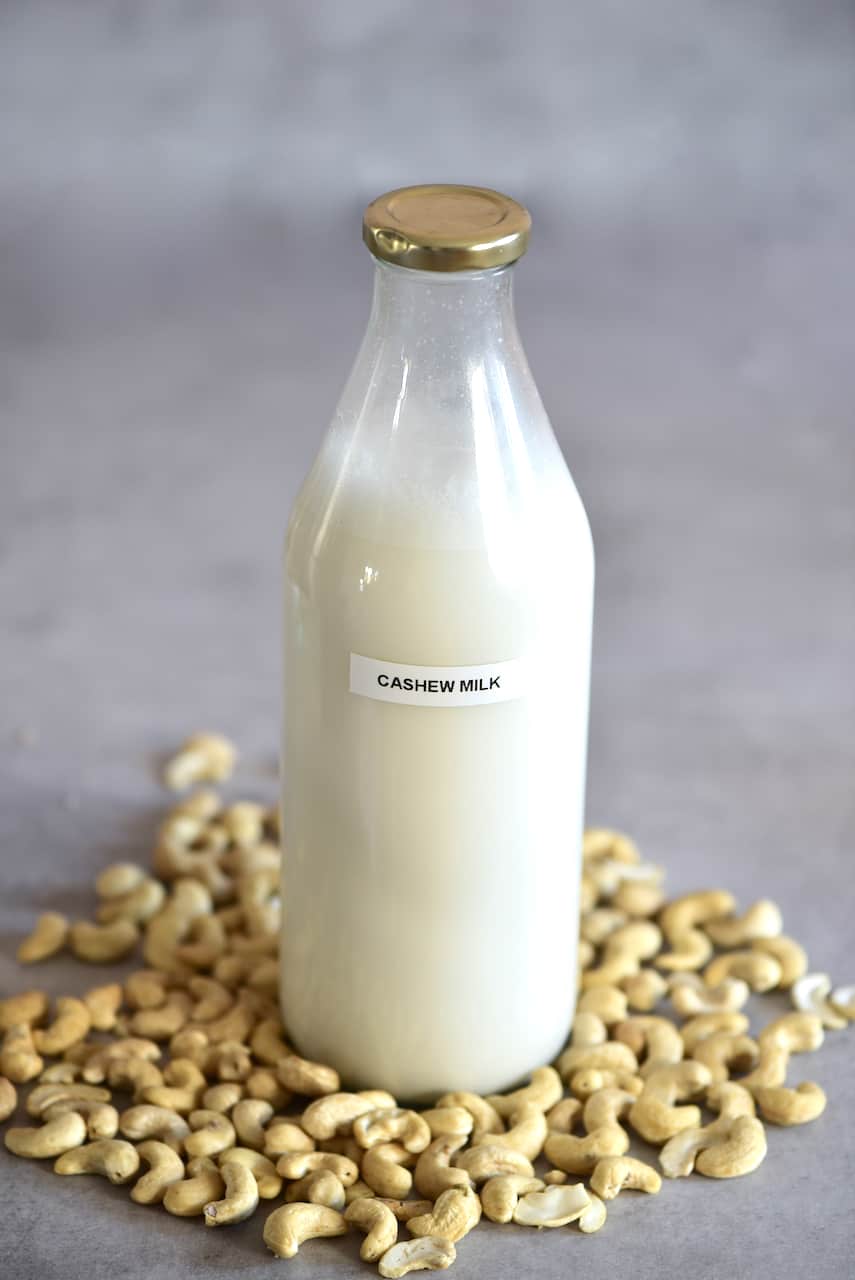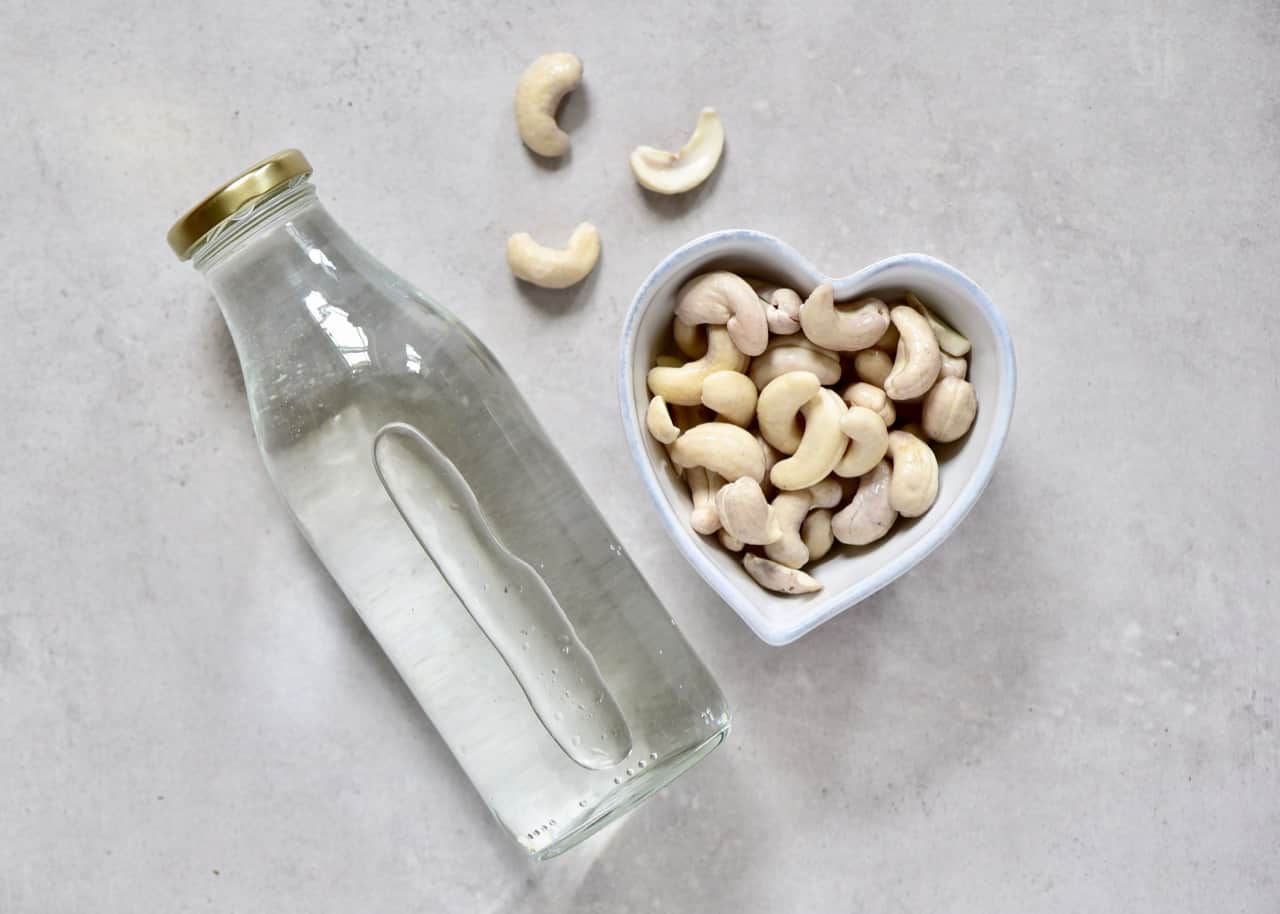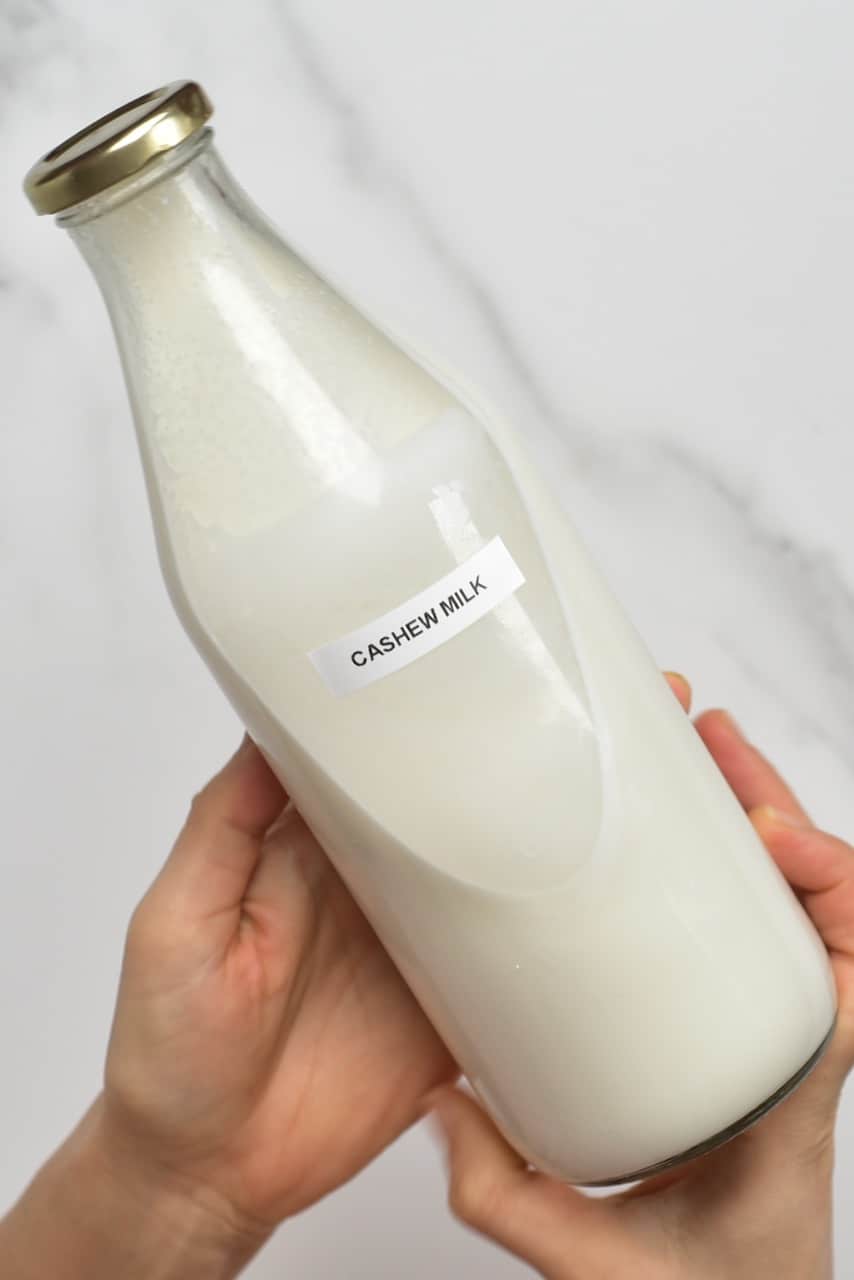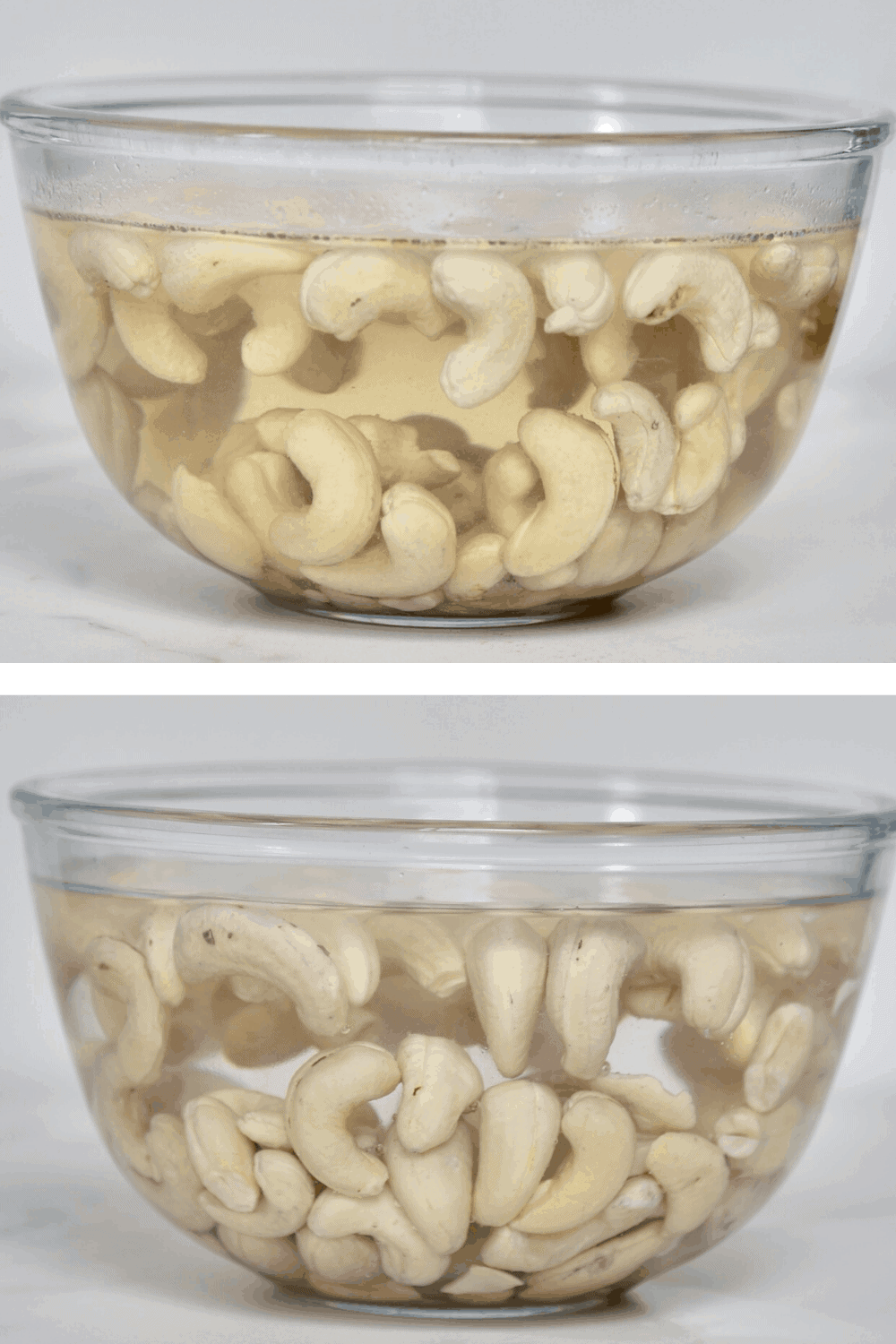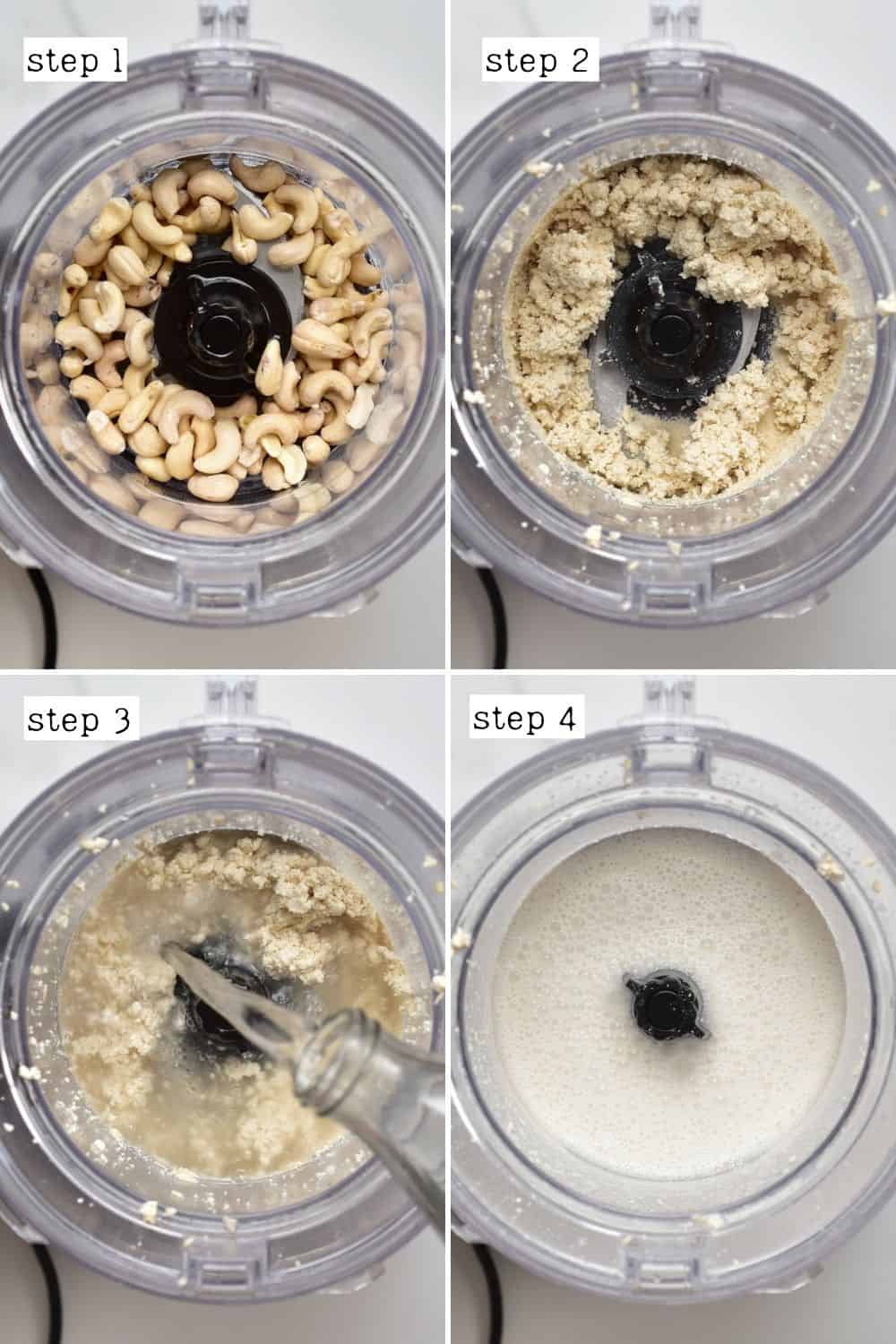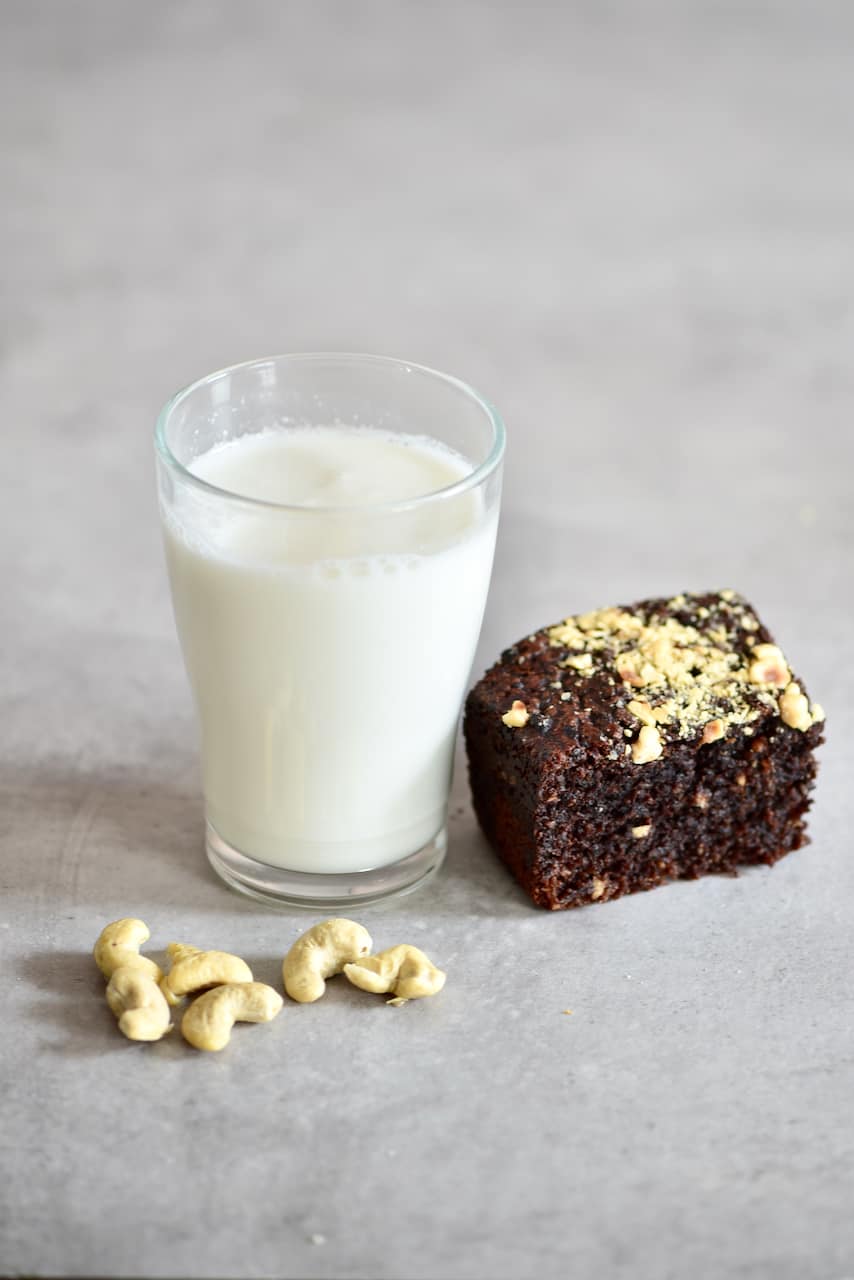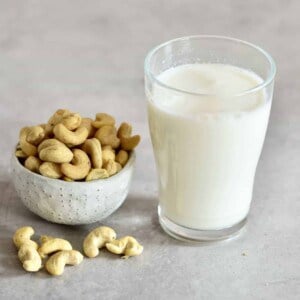This homemade cashew milk recipe was originally posted in March 2020 but has been updated as of October 2021 with some extra notes, tips, uses, and flavor varieties! I’ve been making dairy-free milk for several years now, including homemade coconut milk, homemade oat milk, and plenty of nut and seed options like homemade almond milk, homemade hazelnut milk, and this wonderfully creamy homemade cashew milk! Not only are homemade nut milks free from gums, stabilizers, and other additives, but they’re simple to make, usually cost less, and best of all, in the case of homemade cashew milk, you don’t even have to strain it (most of the time, anyway!). All you need for this homemade cashew milk is just two ingredients (soaked cashews and water) and a few minutes of hands-on prep. The results are a smooth, creamy texture and delicious dairy alternative. It’s perfect for drinking, baking with, adding to sauces, and more! Plus, there are tons of ways to adapt this simple recipe. For example, change the water to cashew ratio based on how creamy you want it to be, add sweetener and other flavoring options if preferred, and more! With a high-speed blender or Nutramilk machine, you don’t even have to manually strain the cashew milk. Though if you do end up with leftover cashew pulp, I’ve provided a list of recommended uses for that too. After all, this is a zero-waste cashew milk recipe!
Is cashew milk good for you?
Cashew milk is packed with vitamins, minerals, healthful plant compounds, and heart-healthy fats. However, due to the fat content (while largely heart-healthy, the % is fairly high), I recommend enjoying it in moderation. Cashews are an excellent source of healthy fats – which aid heart health. They also contain good levels of protein and a variety of vitamins and minerals, which are good for your health. While you’ll generally find that homemade cashew milk contains more calories than store-bought types, this is because homemade versions aren’t “watered down” or don’t rely on thickeners and stabilizers to create the correct consistency. Instead, they’re 100% clean whole ingredients! In fact, I prefer my dairy-free milk recipes to have more calories if this means I’m also consuming more nutrients. Not to mention that homemade cashew milk (and other homemade nut milks) can be super easily customized and flavored without the additional price tag of store-bought flavored options – win-win! Homemade cashew milk has a variety of health benefits associated with it, too. These include improved heart health, eye health, blood sugar level control, etc. It even has anti-cancerous properties and is good for overall immune health. So feel free to go forth and blend those cashews into creamy milk! All of the above is why I also love using soaked cashew “cream” as a base to tons of my dairy-free recipes like Vegan Cherry Layered Cheesecakes (and other no-bake cheesecakes), Cashew Cheese, and Homemade Vegan Feta Cheese.
What you’ll need
How to flavor cashew milk?
Basic optional add-ins
Salt: not only is salt a natural preservative, but it enhances the flavors in the cashew milk for extra deliciousness. Sweetener: there are several sweetening options to choose from. You can use dates (3-6 based on how sweet you’d like it) or date paste, liquid sweeteners (like honey or maple syrup – start with 1 Tbsp and increase to taste), or even try with sugar-free sweeteners. I prefer to use liquid options, so it isn’t grainy.
Flavored cashew milk
Vanilla cashew milk: use the sweetener of your choice, then add one teaspoon of homemade Vanilla extract or Vanilla Powder, and increase to personal taste. Chocolate Cashew milk: add 2 Tbsp of cocoa powder with the sweetener of your choice (adjusted to taste) and a pinch of salt. A pinch of espresso powder will also enhance the chocolate flavor. Strawberry cashew milk: you can use fresh or frozen (if drinking immediately) strawberries. I recommend using around 2 cups of berries with the sweetener of your choice, 1-2 tsp vanilla, and a pinch of salt. You can do the same with other berries (raspberries, blueberries, etc.). Salted caramel cashew milk: spoon in some of this vegan salted caramel (which is essentially dates, vanilla, and salt). I recommend 2-3 dates per cup of cashew milk. Feel free to make it sweeter with the addition of extra maple. Maple Spice milk: add 2-3 tablespoons maple syrup, a pinch of cinnamon and nutmeg, and a pinch of salt. Optionally add some vanilla too. Golden cashew milk: combine this homemade cashew milk with golden spice or golden paste. Espresso: add some instant espresso (2-3 tsp per cup of milk) and sweetener of your choice for a simple, sweet, caffeinated treat. Cashew almond milk: yes, you can even use a combination of nuts or nuts and seeds. I particularly like to make cashew oat milk and cashew almond milk. I use 50/50 cashews and almonds but feel free to experiment with the ratios.
If you want to make any of the above flavored cashew milk options, simply add all the ingredients to the blender when adding the water.
Blender: a high-speed blender is best for making homemade cashew milk that doesn’t require straining. However, thanks to the softness of the soaked cashews, you should also be able to use mid-level blenders. I use a NutraMilk machine. A nut milk bag, a coffe filter, or cheese cloth (optional) – if wanted, you’d need this to strain and filter the milk.
ONE cup soaked cashews + FOUR cups filtered water. With this ratio, the homemade cashew milk is wonderfully creamy and works well for drinking, baking, sauces, smoothies, cereal, etc. It’s probably similar to a 2% (or maybe slightly creamier) dairy milk.
How to make cashew milk
How long does cashew milk last?
Store: store the cashew milk in an airtight bottle in the fridge for between 3-5 days. You can do a “quick soak“ option using hot water, allowing them to soak for at least three hours OR even boil the cashews for 15-20 minutes, until tender. For either of the “quick soak“ options, you can omit the salt. After soaking, drain the water from the cashews and rinse them again. There’s no need to discard the soaking water if you didn’t salt it. This “wastewater” can be used to water plants. However, I don’t recommend drinking it as you’ll be drinking all the nasties you’ve just spent all that time soaking to remove! There are several ways to strain the leftover cashew pulp from the milk. These include using a coffee filter, cheesecloth (several layers placed within a sieve make it easiest to “hold” in place while pouring the milk in), or a nut milk bag (my preferred option) over a large bowl. If you’re using a cheesecloth/a nut milk bag, squeeze as much liquid from the pulp as possible. With a coffee filter, you’ll need to allow it to filter in its own time (which is why I avoid this method). After straining the cashew milk, you can transfer it to a glass bottle (easiest if you have a funnel). As there are no stabilizers in this homemade cashew milk, it will likely separate slightly in the fridge. Just give it a good shake each time before using. You’ll know when the cashew milk has gone bad as it will smell and taste sour. Can you freeze cashew milk? Absolutely. I like to freeze mine in ice-cube trays, so it’s perfectly “portioned,” and I can pop a few cubes out, as needed. I recommend freezing the cashew milk for up to 3 months.
How to use cashew milk?
There are tons of ways to enjoy this homemade cashew milk, including chilled or warmed up. Here are just a few of my favorite ways to use nut milk:
Use for cereal and homemade granola. Mix it into chia pudding. Use for oatmeal or overnight oats. Mix into healthy smoothies and smoothie bowls. Use to make vegan ice cream. Mix into vegan mashed potato and sweet potato puree. Use for milkshakes and other drinks – like coffee! Stir into soups – like this cream of mushroom soup. Add to sauces – like this vegan bechamel or roasted red pepper sauce, etc. Flavor and drink as-is!
Top tips and recipe notes
The amount of pulp will vary: in these images, I’ve used unsoaked cashews (as instructed for the NutraMilk machine), which means I ended up with quite a lot of pulp. However, I’ve found that when using soaked cashews, the pulp is reduced to almost nothing. For a thicker/thinner consistency: simply adjust the amount of water used per cup of cashews. For 2-minute cashew milk from cashew butter: when you’ve run out of cashew milk and need more ASAP, then you can combine 2 tablespoons of unsalted cashew butter (raw is best but not necessary) with the 4 cups of fresh water and blend until smooth and creamy. Straining leftover sediment from the milk: if you’ve used a nut milk bag/cheesecloth and still have tons of sediment, you can strain the milk through a coffee filter. For whole30 cashew milk: you can either leave the cashew milk recipe unsweetened OR use dates to sweeten it naturally. You can even experiment with some of the flavored options (for example, you could use cacao powder with dates and a pinch of salt for chocolate cashew milk). When buying cashews: look out for ethically sourced fair-trade cashews. That way, you protect the workers who can end up with permanent hand/finger damage from harvesting cashews when the working conditions are poor.
Other nut and seed milk recipes
Walnut milk Hazelnut milk Pistachio milk ‘Instant’ almond milk Tiger nut milk (horchata de chufa) Hemp seed milk
As always, if you give this homemade cashew milk recipe a try, let me know your thoughts and questions in the comments below. Also, feel free to tag me in your recreations @AlphaFoodie.
